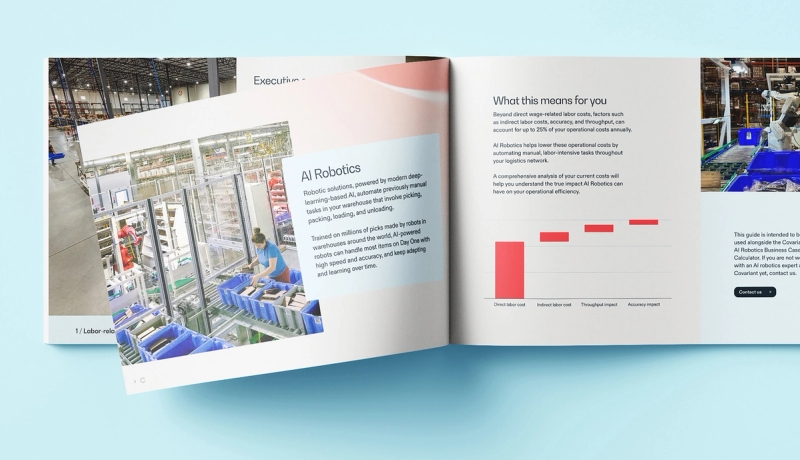Today, retailers and logistics providers are leveraging AI-powered robotics at scale to meet performance and reliability requirements and reduce costs. They are unlocking the biggest opportunity to increase operational efficiency by automating manual tasks, including picking, packing, loading, and unloading, which represent up to 60% of fulfillment operations costs.
Previously, such manual tasks could not be automated with traditional robotics, which failed to adapt to dynamic and complex conditions. Recent advancements in the field of modern AI now enable robots to perform these tasks, while adapting to changes in your operations, and reduce your operational cost for fulfillment.

Making the business case for AI Robotics
As you evaluate adopting AI Robotics to automate your operations, it is important to understand the true impact such a transformation can have on your near-term and long-term business:
- Labor-related cost impact: Automate labor-intensive parts of your operations and reduce direct and indirect labor costs.
- Throughput and capacity impact: Ensure you are meeting your operational throughput and capacity requirements with always-ready and available autonomous robotic solutions.
- Accuracy-related impact: Reduce returns processing and rework costs by automating error-prone processes in your workflow.
Taking a deeper dive into these areas of impact can help you identify the true costs of your manual fulfillment operations. AI Robotics helps you reduce these costs and increase operational efficiency across your fulfillment network.
